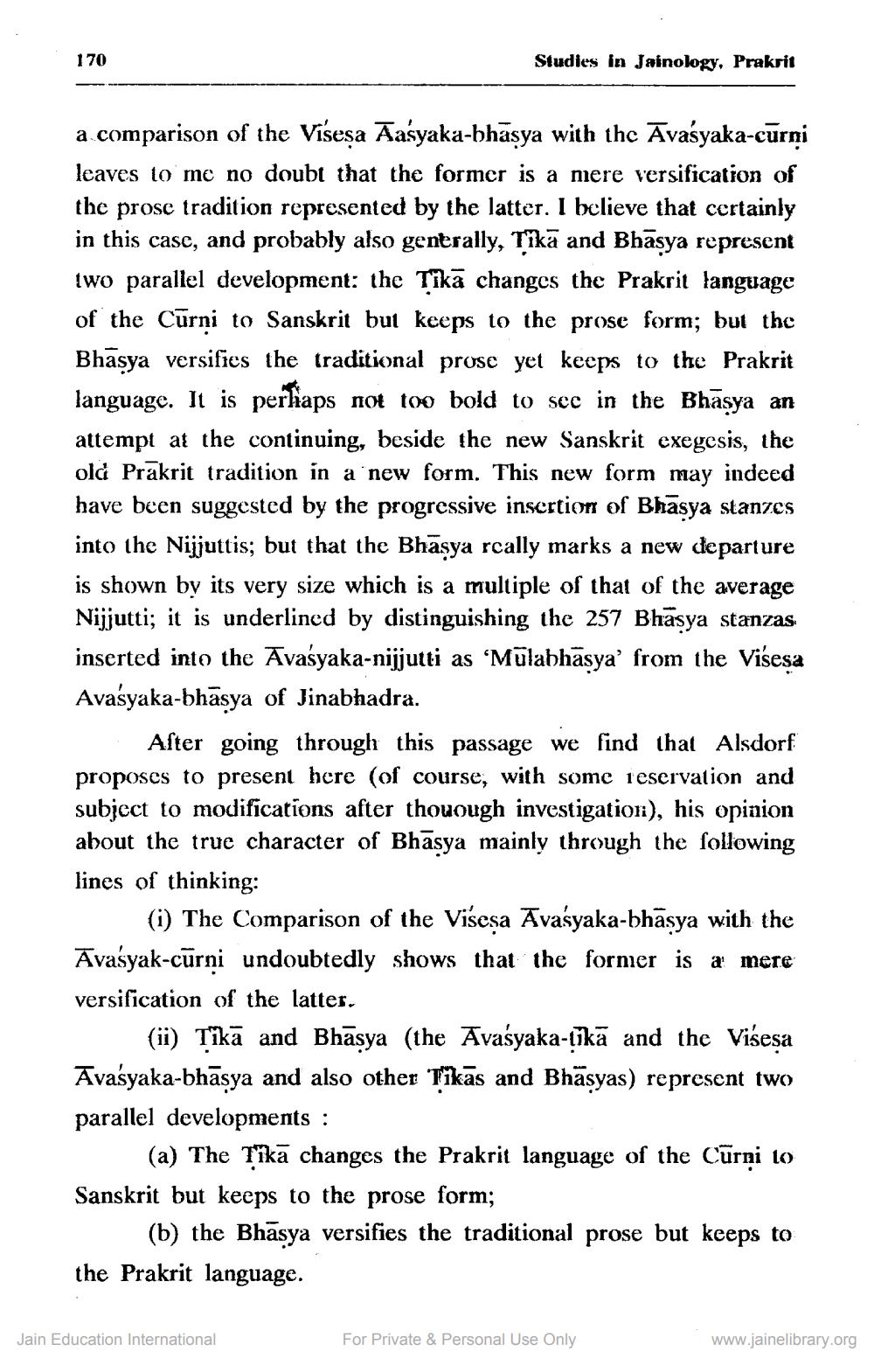________________
170
Studies in Jainology, Prakrit
a.comparison of the Visesa Aasyaka-bhāsya with the Āvasyaka-curni leaves to me no doubt that the former is a mere versification of the prose tradition represented by the latter. I believe that certainly in this case, and probably also generally, Tikā and Bhasya represent two parallel development: the Tīkā changes the Prakrit language of the Cūrni to Sanskrit but keeps to the prose form; but the Bhāsya versifies the traditional prose yet keeps to the Prakrit language. It is perhaps not too bold to see in the Bhāsya an attempt at the continuing, beside the new Sanskrit exegesis, the old Prakrit tradition in a new form. This new form may indeed have been suggested by the progressive insertion of Bhāsya stanzes into the Nijjuttis; but that the Bhasya rcally marks a new departure is shown by its very size which is a multiple of that of the average Nijjutti; it is underlined by distinguishing the 257 Bhāsya stanzas. inserted into the Avaśyaka-nijjutti as ‘Mūlabhāsya' from the Visesa Avaśyaka-bhasya of Jinabhadra.
After going through this passage we find that Alsdorf proposes to present here (of course, with some reservation and subject to modifications after thouough investigation), his opinion about the true character of Bhāsya mainly through the following lines of thinking:
(i) The Comparison of the Visesa Avasyaka-bhāsya with the Avaśyak-cūrni undoubtedly shows that the former is a mere versification of the latter.
(ii) Tīkā and Bhasya (the Avasyaka-ịīkā and the Visesa Avaśyaka-bhāsya and also other Tikās and Bhāsyas) represent two parallel developments :
(a) The Tikā changes the Prakrit language of the Cūrni to Sanskrit but keeps to the prose form;
(b) the Bhāsya versifies the traditional prose but keeps to the Prakrit language.
Jain Education International
For Private & Personal Use Only
www.jainelibrary.org




